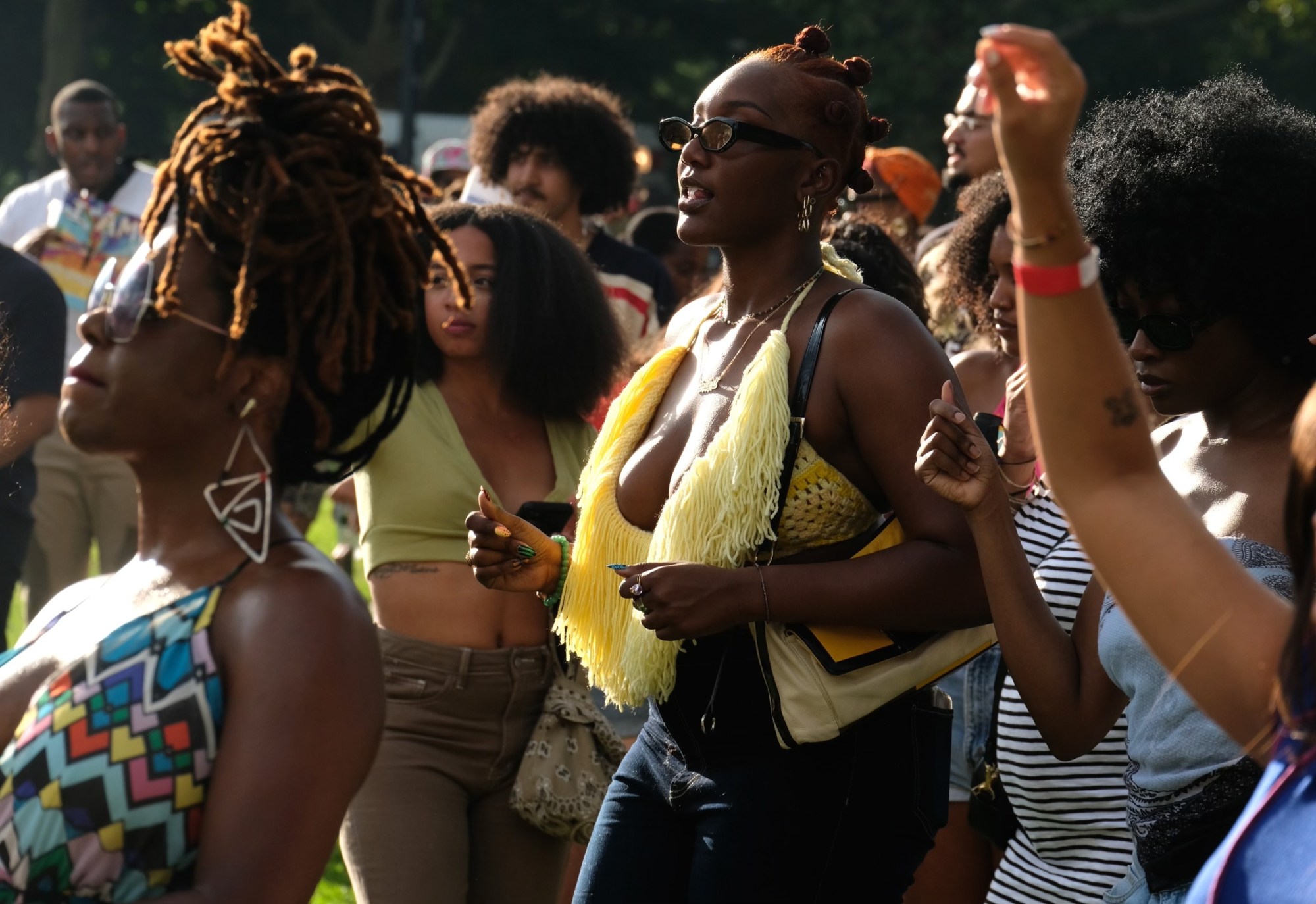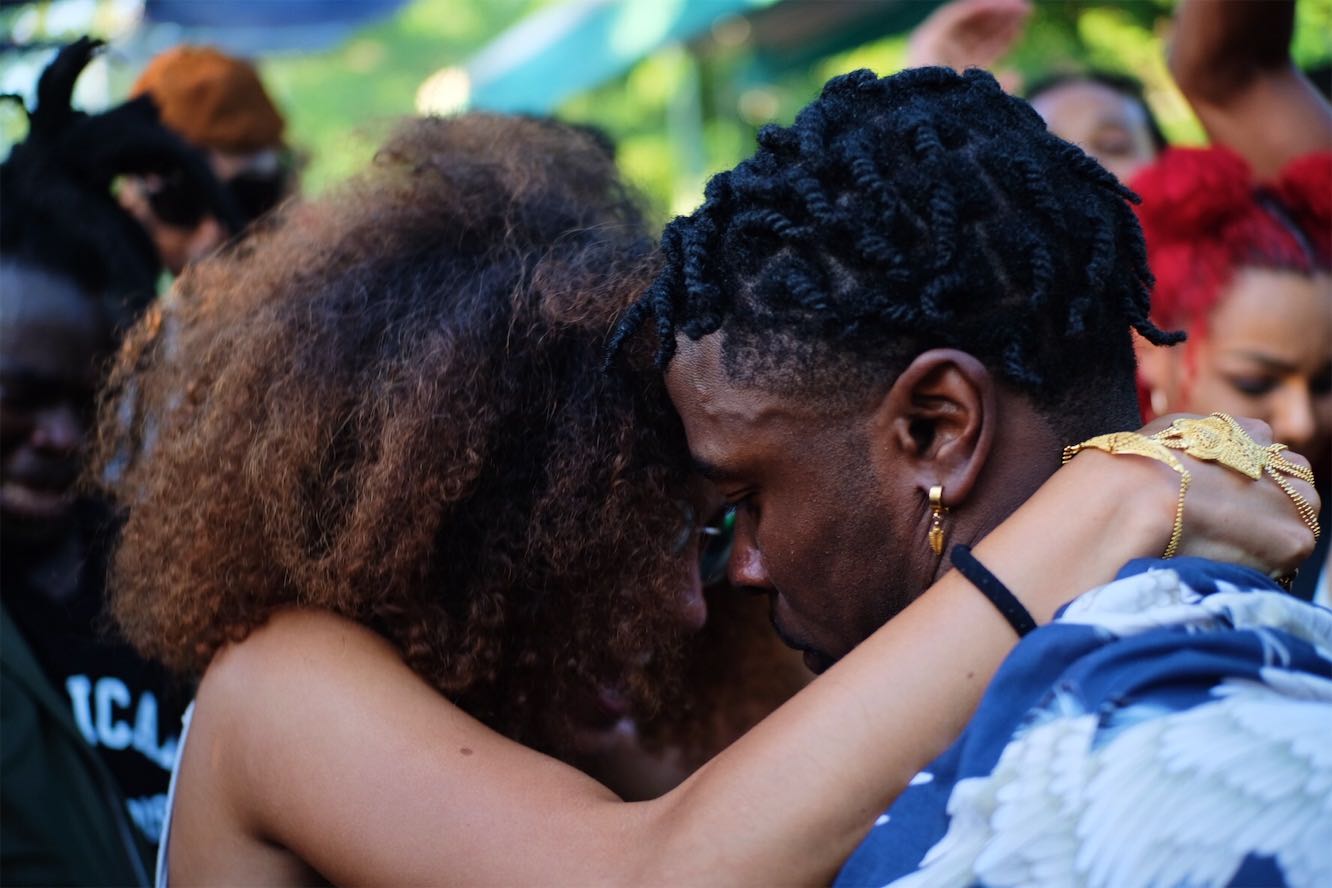The BTF100 is a list of Black creatives, artists and tastemakers who are globally disrupting the art and media landscape. These individuals, co-curated by the teams at both Blacktag and i-D, sit across multiple disciplines, industries and spaces, unapologetically defying stereotypes and clashing traditions to make space for new ideals.
Each week, for the next four weeks, we’ll be dropping 25 names from the list alongside special features delving deeper into what it means to centre, celebrate and create equity for Black voices. Head over to the BTF100 microsite for the full list!
The brainchild of founders Saada Ahmed, Roble Ali and Mohamed Hamad, Everyday People started modestly in 2012 as an intimate monthly brunch at Hotel Rivington on New York’s Lower East Side. In the almost nine years since, the day party has become a fully-fledged Black cultural experience hosting thousands of melanated and impeccably dressed guests, spanning multiple continents across the African diaspora, and celebrating Black joy.
The growing team at Everyday People is always exploring what it means to expand on their original concept, translating their talent for bringing people together to experience live music into impact-driven partnerships and initiatives focused on community, wellness and building safe space for dialogue. “The purpose is the people,” says creative project manager Aires Mirando-Antonio of their vision. “We aim to create spaces that lead underrepresented people of color, especially Black people, to freedom, whether through dancing, community sessions or fundraising for mutual aid. We aspire to support our community in feeling heard, seen and welcomed.”

How do you hope to impact culture?
We aspire to impact culture by being within our community. We aim to impact by way of providing space and resources for wellness, joy and hope. Impacting culture has never been our foremost goal, but rather a welcomed outcome of our live events and digital space holding(s).
Beyond the financial and social media metrics, impact for us has always been a matter of engagement. When our community shows up, in whatever way they can, we know an impact is immediate as we can feel it. Our energy as a community and as many cultures coming together drives us forward to new cities, new types of events, and new people. Ultimately our impact is the action of growing our community as we grow.
How would you describe Black culture’s influence on popular culture?
Black culture is pop culture. Black culture is desired and seen as aspirational in so many industries because we hold incredibly rich cultural currency and capital. This capital has been cyclically stolen from us for too long, in a pattern where first, Black culture is created, then a mainstream industry attempts to monetize it. Then the output of our culture is ultimately resold and exploited to larger audiences, with or without our consent. For too long, this cycle happened with no end in sight. Now, we can support and provide funding for each other in a more significant way within the Black community. This enables us to break this cycle, which we can achieve by supporting each other without inhibition of failure or lack of capital or exploitative schemes. We hope Black culture stops being underestimated. As we continue to fund and invest in one another, we know that we only continue to grow into our Afro-Futuristic dreams.
What nuances or tensions are you finding as you navigate the creative landscape as a Black creator?
The most considerable tension within the creative landscape is the frequency of people treating Blackness as monolithic. Educating ourselves about the diversity of Blackness and what Black life can look like is the most rewarding and challenging part. Black culture is so rich and vast that compiling it as singular often feels silly, especially within New York City alone. The different varieties of Blackness within the African diaspora are so complicated and underestimated that even we have our shortcomings in fairly representing the vastness of the culture and sounds of Africans, Afro-Caribbeans, Afro-Latinx and African Americans. We feel most tense when one community feels unrepresented, or their intersectional identities such as gender, sexuality, immigration/citizenship status are not centered as we desire to educate others while still learning ourselves. Knowing that we approach such education through transparency, honesty and accountability will always make it easier.

What ground is left to cover in representing voices like yours in the arts and in media?
We have to own distribution channels. Too often, we create art or produce content, only to then look to mainstream media for distribution. Owning the distribution platforms, whether they be print, websites, radio stations, television or film studios, would allow us to properly represent the various artists and voices that speak to the abundant diversity that exists within our community. Distribution being within our own hands shifts our relationship with both consumers and artists, opening up the door for further collaborations, building larger systems and networks of Black art to be shared authentically outside of mainstream channels.
From racial-driven biases to Black creators written out of trends, what work do traditional content platforms need to do to better support Black creativity?
Traditional content platforms need to support Black creativity in all aspects, beyond the trends and profitable products at the moment. As we’ve noted, the Black community is anything but monolithic, and the failure of mainstream content platforms to realize this means that Black creatives hold a significant amount of untapped potential that is unfortunately left unsupported. These platforms need to protect and support Black creators authentically and understand that if their team is not representative of their users, they are bound to either exploit those not represented or end up coming up short of the expectations of that community.
Looking towards the future, how will you define success in your field?
Success is a pursuit of our joyful community having its needs met. It’s knowing that regardless of the city we create space for the celebration of self, which is just political as it is healing. Success looks like our community members feeling freedom and joy while simultaneously experiencing belonging and community. Beyond expanding the footprint of our events to more cities, both domestically and internationally, we want to prioritize partnering with more mutual aid organizations that are doing the work, which further leads us to the most significant impact for others.
What does the community you’re a part of mean to you, and how do you want to give back to it?
Our community means everything to us — without them we are nothing. The concept of mutual aid is imperative to us, we are currently educating ourselves as to how to share with our community and formally introduce them to mutual aid as a philosophy: a system of voluntary political participation in which we take responsibility to care for one another and change our conditions for mutual benefit. Ultimately, we are moving to partner with the existing mutual aid groups that are already doing the work. We want to be sure that we are utilizing solidarity rather than charity.
Which peers do you look to for guidance and inspiration?
We look to fantastic folks like Papi Juice, who have been growing and making the most incredible space for Black and Brown members of the LGBTQ+ community. We have watched their rise, and they continue to astound us in their upward trajectory and create spaces for a proud community. We look to Heal Haus, who inspire us to center our wellness in varying approaches — offering a multitude of classes for the community from yoga to meditation to a beautiful cafe space. And finally, we look within our community. The guidance that the people on the ground doing the work give us continues to be our guide. We have the most fantastic audience that continues to show up and show out for us, and we maintain nothing but gratitude for them.


